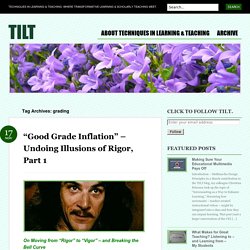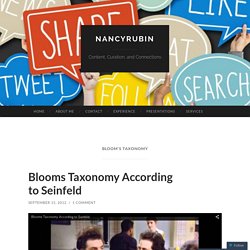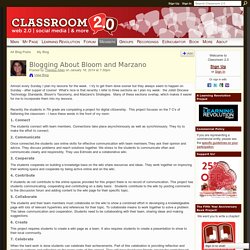

Grading. On Moving from “Rigor” to “Vigor” – and Breaking the Bell Curve As a starting out teacher, I often ended a term by bringing an assortment of student course work portfolios to a department chair’s office.

The collection was to include three portfolios of student work with peer, student and teacher comments on major graded assignments, one folder each for the course highest, midpoint, and lowest grade. These weren’t meetings like the regular meet ups in the department where teachers brought a portfolio or two to share as part of a “grade norming” or calibrating session that helped us develop new assignments, apt assessments, and agile responses for the range of students needing feedback while completing major assignments. Nope. This was an end-of-the-term call to demonstrate that my students really had earned that “high number” of A and B grades, that none of my students really should have been “given” a failing course grade. So, what’s this got to do with higher education right now? Bloom’s Taxonomy. My notes on: Thinking Critically about Assessing Online Learning Johnson, Daniel. (2008).

Thinking Critically about Assessing Online Learning. The International Journal of Learning, Volume 14, Issue 12, pp.125-130. Article: Print (Spiral Bound). Article: Electronic (PDF File; 487.276KB). Assessment The importance of assessment in education coupled with the relevance of student –centered knowledge construction presents a strong case for critical thinking skills being used in online course assessments.
The reasons for assessment include determining student achievement, modifying instruction, and improving curricula. Two basic forms of assessment are formative and summative. Summative Assessment – a cumulative exam usually having a major role in determining a course grade.Formative Assessment – learners take quizzes throughout a course to demonstrate his/her course knowledge. Toolbox for Planning Rigorous Instruction - Revised Bloom's Taxonomy 6 in 1 Poster-ES.
Bloomstheory - Original Taxonomy. European Journal of Open, Distance and E-Learning. Manisha Domun [manisha.domun@gmail.com], Lifelong Learning Cluster, Goonesh K Bahadur [g.bahadur@uom.ac.mu], Virtual Centre for Innovative Learning Technologies, University of Mauritius, Reduit, Mauritius [ One of the most effective tools in e-learning is the Self-Assessment Tool (SAT) and research has shown that students need to accurately assess their own performance thus improving their learning.

The study involved the design and development of a self-assessment tool based on the Revised Blooms taxonomy Framework. As a second step in investigating the effectiveness of the SAT, 1st year student of the BSC Educational Technology program from the VCILT, University of Mauritius were used as testing sample. At this stage the SAT was provided to only half of the sample who were randomly chosen and placed into a treatment group. The remaining half (Control Group) had the normal conditions on the E-learning platform. The theoretical framework Figure 1. Figure 2. Aims and objectives Figure 3.
Google Image Result for. Blogging About Bloom and Marzano - Classroom 2.0. Almost every Sunday I plan my lessons for the week.

I try to get them done sooner but they always seem to happen on Sunday - after supper of course! What's nice is that recently I refer to three sections as I plan my week: the Joliet Diocese Technology Standards, Bloom's Taxonomy, and Marzano's Strategies. Many of these sections overlap, which makes it easier for me to incorporate them into my lessons. Recently the students in 7th grade are completing a project for digital citizenship. This project focuses on the 7 C's of flattening the classroom - I have these words in the front of my room: 1.
The students connect with team members. 2. Once connected,the students use online skills for effective communication with team members.They ask their opinion and advice. 3. The students cooperate on building a knowledge base on the wiki share resources and ideas. 4. If students do not contribute to the online spaces provided for this project there is no record of communication. 5. 6.